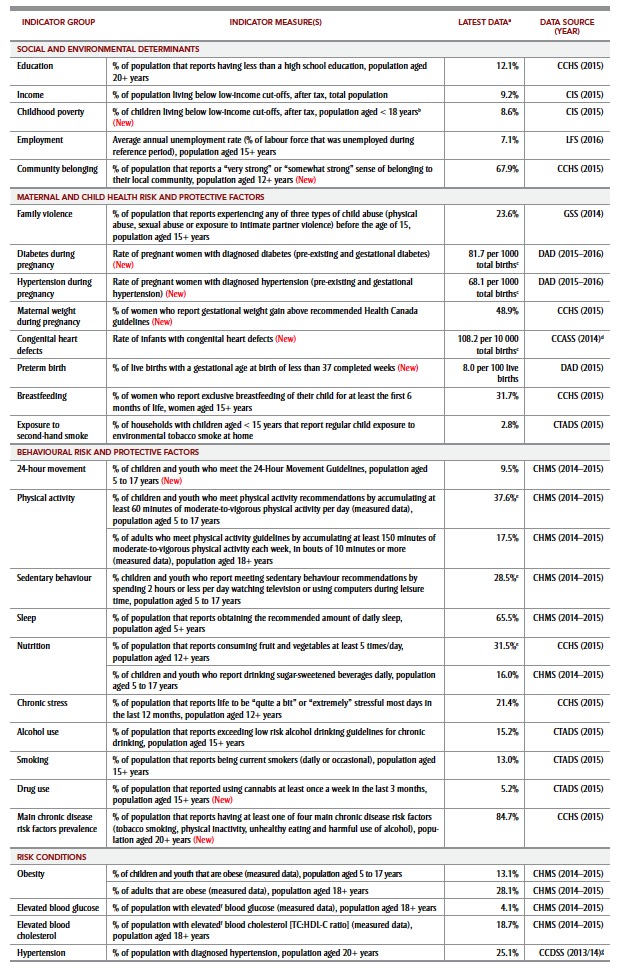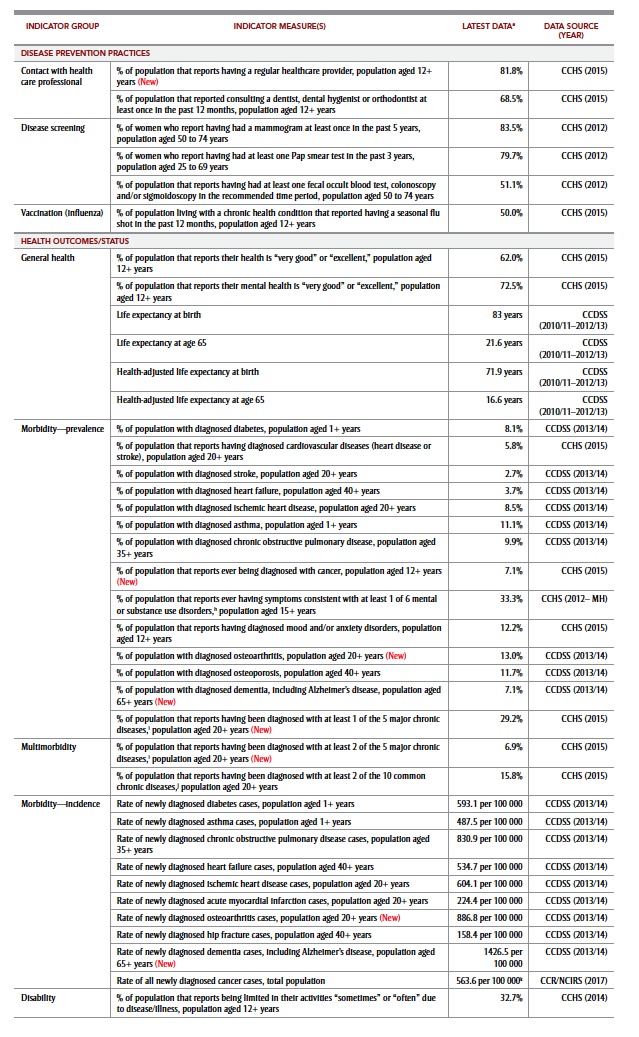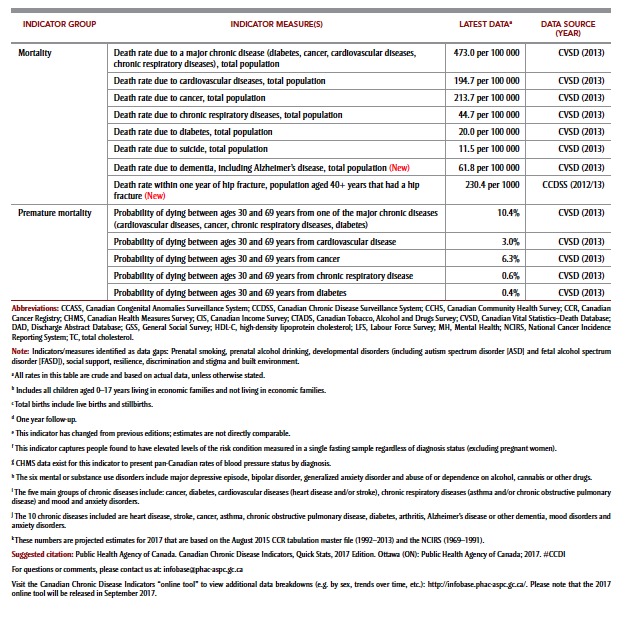Following the first major review of the Chronic Disease and Injury Indicator Framework (CDIIF) since its inception in 2012, the 2017 edition is being released in this issue of Health Promotion and Chronic Disease Prevention in Canada (HPCDP) under its new name: Canadian Chronic Disease Indicators (CCDI; see Table 1).
Table 1. CANADIAN CHRONIC DISEASE INDICATORS QUICK STATS, 2017 EDITION.
  
|
Background
The Public Health Agency of Canada (PHAC) developed the Chronic Disease Indicator Framework in 2012 in order to improve access to current surveillance data by providing up-to-date, consistent, reliable and ongoing information on chronic disease and associated risk and protective factors. In 2014, the Framework was expanded to include injury, and was renamed Chronic Disease and Injury Indicator Framework (CDIIF). The CDIIF includes indicators based on six main domains: social and environmental determinants, maternal and child health risk and protective factors (RPFs), behaviour RPFs, risk conditions, disease prevention practices, and health outcomes/status. Its target audience is policy makers and public health professionals but it has broad applicability as a reference tool. The CDIIF is updated annually and made publicly available online through an interactive data tool and a downloadable summary document called “Quick Stats,” and is published in the HPCDP Journal.
In early 2016, a steering committee was established to provide direction and make decisions related to the ongoing refinement, improvement and dissemination of the CDIIF and its related products. The steering committee is comprised of PHAC members with knowledge and expertise in domains covering the following topic areas: chronic disease (including mental illness); chronic disease RPFs; family violence and elder abuse; and maternal, child and youth health. While the initial set of indicators was determined by a core group and after broad internal and external stakeholder consultations, the committee undertook a comprehensive review of these indicators to identify gaps and areas for improvement.
Main changes to the CDIIF
As a result of their review, the steering committee took the following actions:
(1) Refocussed the scope of the CDIIF to include only chronic disease and to exclude injury, to reflect its original purpose and account for the inherent differences between chronic disease and injury in terms of risk factors, causes and outcomes.
(2) Renamed the CDIIF to Canadian Chronic Disease Indicators (CCDI) to reflect the change in scope and simplify the title.
(3) Revised the existing content to address important gaps and emerging issues. Nineteen new measures were added, 21 existing measures were deleted or replaced and many indicators were modified or merged.
Additions included indicators that put more emphasis on social determinants and maternal and child health factors influencing the development of chronic diseases (such as community belonging, childhood poverty, weight gain, diabetes and hypertension during pregnancy, and preterm birth). Other indicators were added to include cannabis use (due to the upcoming legislative change in Canada), dementia, including Alzheimer’s disease, exposure to second-hand smoke and the Canadian 24-Hour Movement Guidelines for Children and Youth.
Changes were made to indicators related to multimorbidity and morbidity, contact with a health care professional and healthy eating and smoking.
Changes were made to indicators related to multimorbidity and morbidity, contact with a health care professional and healthy eating and smoking.
Future work
An in-depth review of indicators in the CCDI is anticipated to take place every three years. Data gaps identified for future consideration include resilience, social support, discrimination and stigma, built environment, prenatal smoking and alcohol consumption and developmental disorders.


